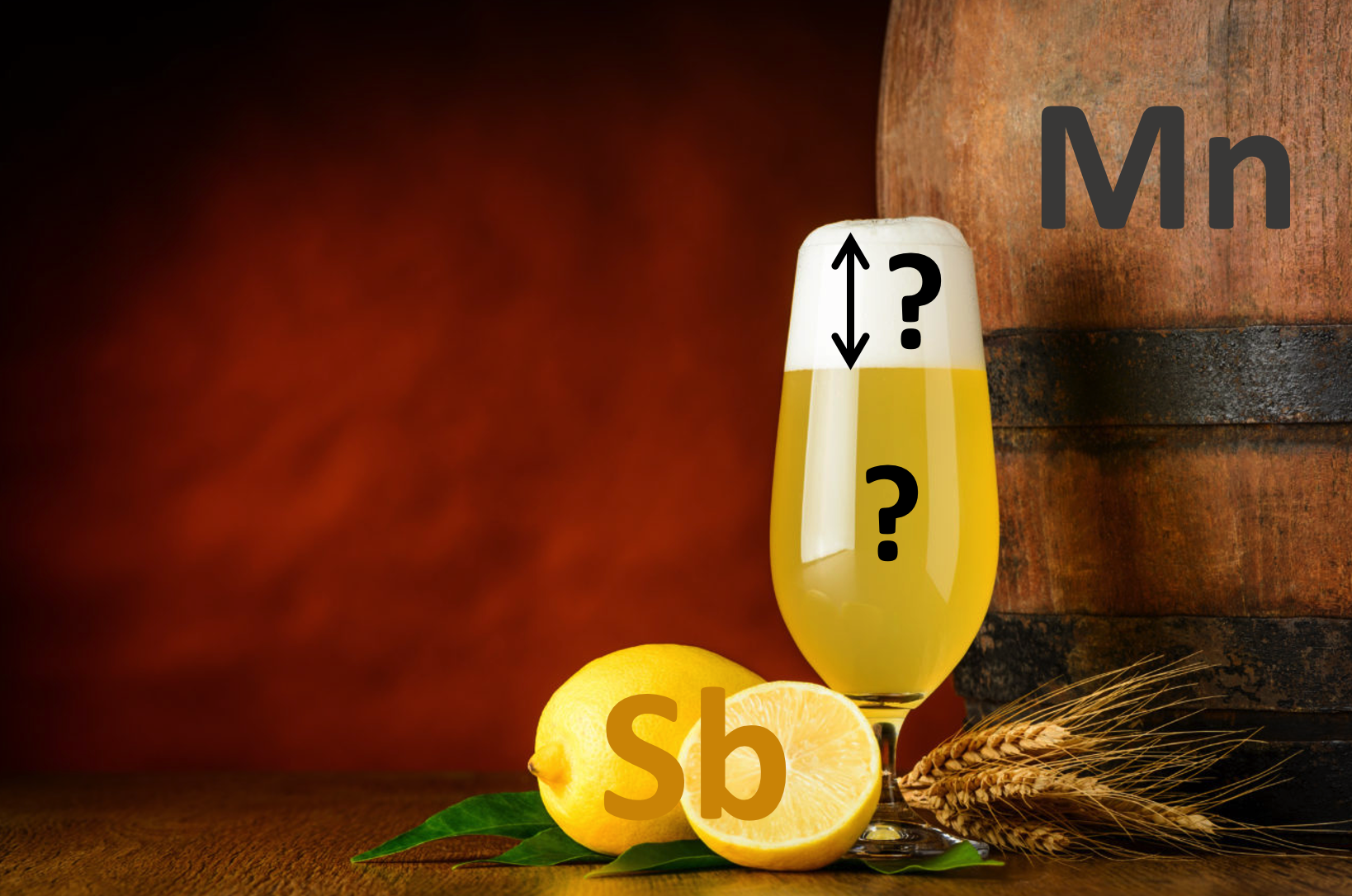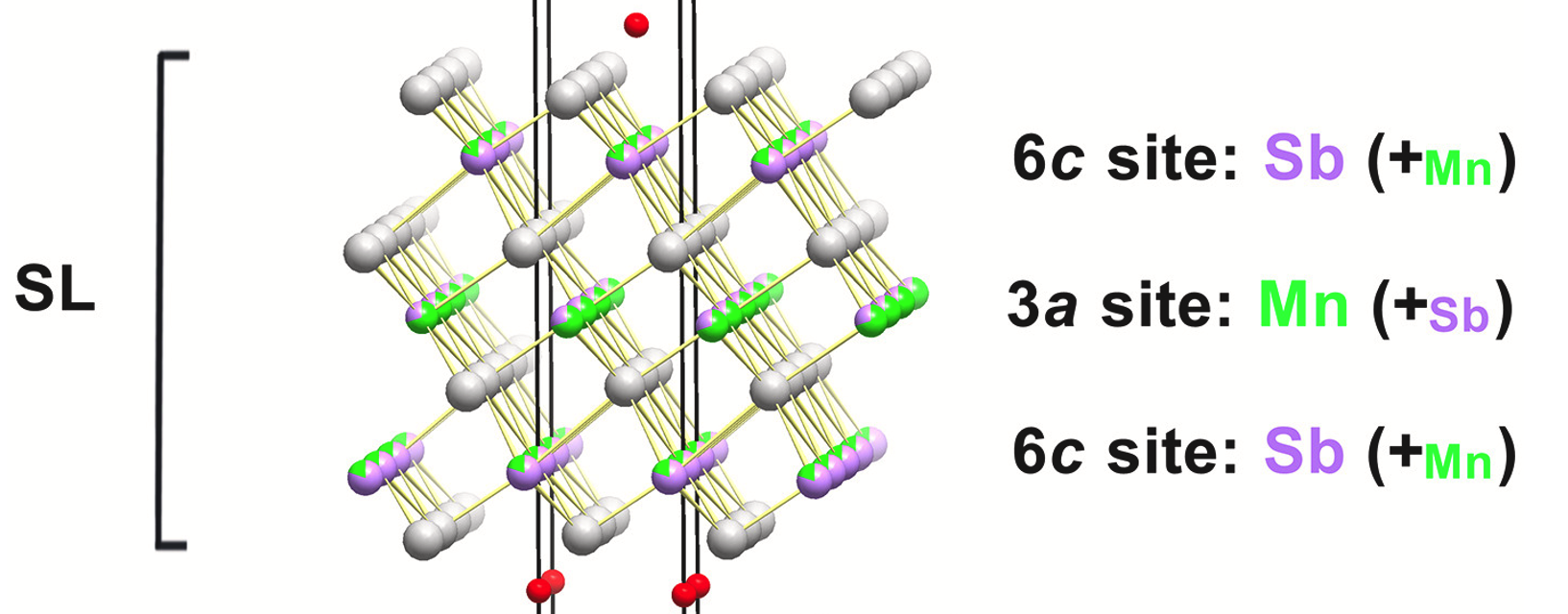Ionic mixing in antiferromagnetic topological materials
Together with collaborators from IFW Dresden, the University of Würzburg and the University of Amsterdam and others, we just published a new paper:
M. Sahoo et al., Tuning strategy for Curie-temperature enhancement in the van der Waals magnet Mn1+x Sb2-xTe4 (Materials Today Physics 38, 101265, 2023)
The structural family of MnSb2Te4 is of great interest because it combines antiferromagnetic order with the potential for complex band topology. In fact, the recent discovery of the quantum anomalous Hall effect in the sister compound MnBi2Te4 has been a milestone in the field of topological matter - it means that we now have real materials in which the transport of topologically protected Dirac fermions is intrinsically linked to electronic correlations. Several ideas have already been proposed on how such materials could be used to enable next-generation spintronic topological devices, like fast topological memories or transistors, or as new platforms for quantum computing.
Ionic mixing within the “septuple layers” of the van der Waals layered Material MnSb2Te4
Unfortunately, “real” materials are rarely ideal, and a lot of optimization and tuning will be necessary to put such ideas into practice. In particular, the layered structure of MnSb2Te4 is prone to ionic vacancies and mixing between the Mn and Sb atomic sites. How this can be controlled in crystal growth is not well known, but it is clear that it has a strong effect on electronic correlations, as, for example, it determines the magnetic ordering temperature.
The main goal of our new study is to get a better understanding of how disorder and vacancies impact exchange interactions between the layers of Mn ions. To this end, we selected MnSb2Te4 samples that have a particularly high magnetic ordering temperature and characterized their structural properties in detail. The problem is that subtle structural effects like disorder and vacancies from a single technique are necessarily ambiguous. However, the combination of X-ray and neutron scattering saved the day.
Consider this (almost perfect!) analogy for our problem:
You want to determine the amount of beer (antimony) and lemonade (manganese) in two not-quite-full glasses of shandy (ionic sites), but your technique (x-ray scattering) can only measure the number of calories per glass (x-ray form factor).
Clearly, the result is ambiguous, because a half-full glass of a mixed drink may give the same result as more/less filled glass of the less/more sugary drink. This is expressed by the coloured maps in our figure below: Three datasets (top: x-ray single crystal, middle: x-ray powder, bottom: neutron powder) can each be described not by a single occupancy/mixing solution but by a continuous trace in the occupancy-vs.-mixing landscape.
However, the neutron (red) and x-ray (blue) solutions only intersect at one common compatible configuration: The 0.5l glass is filled to the brim with a 70%/30% mix, and the 1.0l glass has a 12%/83% mix but is also 5% empty. To get a grasp on the magnetic properties of these interesting materials, one will have to systematically study how the quality of the pour can be optimized by crystal synthesis parameters.




